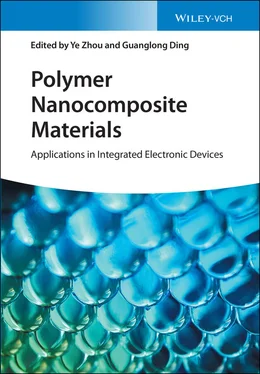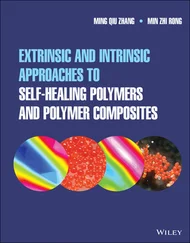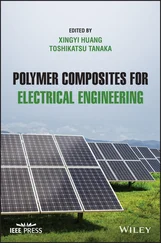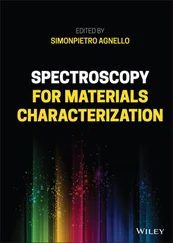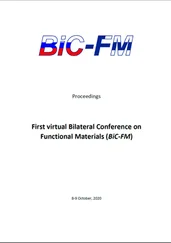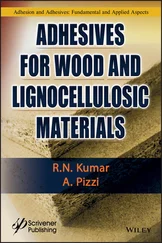Herein, we would like to thank all the authors who have made contributions in this book. We want to express our sincerest appreciation and respect to Ms. Katherine Wong, Dr. Shaoyu Qian, Ms. Pinky Sathishkumar, Mathangi Balasubramanian and other editors at Wiley for all the help offered during the whole book editing process. We also want to thank all the readers interested in this book. In this book, we have introduced the concepts, properties, and mechanisms of polymer nanocomposites and summarized their recent applications in some hottest fields. The application challenges, commercial prospects, and potential research directions of polymer nanocomposites are also pointed out and discussed. We aim to provide a comprehensive, popular, and up-to-date book for the researchers. Although we have done our best to make this book better, there still inevitably are some omissions and mistakes. Please grant your criticisms and instructions.
We hope that this book can provide references and guides for researchers in polymer nanocomposites based electron devices, as well as promote the interests of the students to this field.
01 June 2020
Ye Zhou
Guanglong Ding
1
Introduction of Polymer Nanocomposites
Teng Li1, Guanglong Ding2, Su-Ting Han1, and Ye Zhou2
1 Shenzhen University, Institute of Microscale Optoelectronics, Room 909, Shenzhen, Guangdong, 518060, China
2 Shenzhen University, Institute for Advanced Study, Room 358, Shenzhen, Guangdong, 518060, China
Polymers have been one of the most important components in almost every area of human activity today. Nowadays, polymers as multifunctional materials gradually replace metals, glass, paper, and other traditional materials in various applications due to its lightweight, flexibility, and low cost [1]. In most of their applications, the applied materials are not composed of a single chemical component but mixture systems of multiple components with polymers and other additives. By incorporating different additives, such as metal, minerals, or even air, a wide variety of materials with unique physical properties and competitive production costs can be produced. For example, glass fiber-reinforced plastics are composite materials manufactured by laminating unsaturated polyester resin with glass fiber and filler, which can increase mechanical strength and heat resistance [2].
In addition, scientific research shows that the size of filling material in fiber reinforced composites has a great influence on the material properties, since the size of the filling particles largely determines the surface interactions of adhesion, particle movement, dispersion, and bonding between the surface and matrix [3]. With the particle size of the filler that gradually reduces to the nanoscale, some properties depending on the interface have undergone great changes, such as gas adsorption, chemical activity, electrical properties, and catalytic activity. Examples of different sizes of materials are shown in Figure 1.1, and a hydrogen atom is about 0.1 nm in size, while a human hair is 10 4nm in diameter. Among them, nanomaterials are employed to describe the materials that have at least one dimension in the size range from approximately 1 to 100 nm [4]. Different from the bulk and microscale materials, nanomaterials are unique in that they have many unusual, useful, and interesting properties. For example, bulk gold is a very stable precious metal in golden color, which can be kept for a long time under atmospheric environment, so it is used as the initial currency by people. Unlike bulk gold, gold nanoparticles dispersed in water will show different colors according to the size of nanoparticles, and they have high reactivity that can even be used as catalyst at low temperature [5]. Since most of the properties of nanomaterials depend on their size, shape, and surface structure, their ultrafine size always tends nanomaterials to aggregate into bulk materials, especially without proper stabilization in their formation and application [6]. This is because the agglomeration process makes the high surface energy and activity of nanomaterials decrease to a more stable state. Therefore, in order to preserve the properties of nanomaterials, it is necessary to distribute them uniformly in matrices to prevent from aggregating into bulk materials [7].
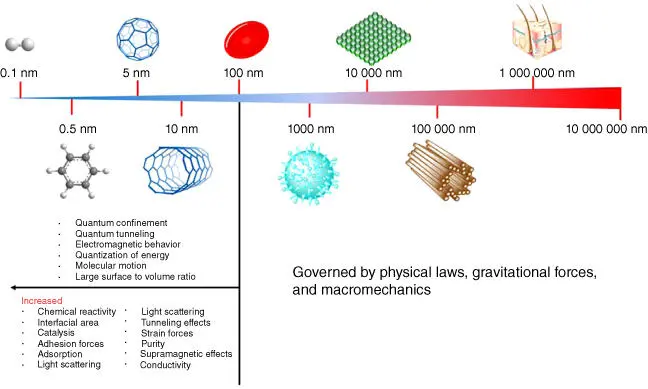
Figure 1.1 Nanomaterials peculiarities of size scale.
Polymer nanocomposites (PNCs) are the mixture of polymers and nanomaterials, having at least one-dimensional structure and one component material in the nanometer regime of less than 100 nm. Combining nanomaterials into the polymer matrix not only makes it possible to produce a new class of properties provided by uniformly dispersed nanomaterials, but also greatly improves most of expected properties of the original polymer, such as mechanical properties, heat resistance, biodegradability, and so on [8]. As early as 1970, the term “nanocomposites” was first proposed by Theng [9], and PNCs began to develop in commercial research institutions and academic laboratories in the late 1980s [10, 11]. Over the past decade, PNCs have made great progress in various fields, which is reflected by the exponential growth of publications from their inception ( Figure 1.2). The existence of nanomaterials in polymer matrix changes the surface chemical and physicochemical properties of PNCs, where the geometry, surface chemistry, aspect ratio, and size of nanomaterials are the key parameters to regulate these performances. Therefore, PNCs are a new class of materials with unique properties, which are far superior to traditional doped and composite polymer systems. The large interface interaction between nanomaterials and polymer matrix surfaces and the difference of nanoscale fundamentally distinguish PNCs from the traditional system. The development of nanomaterials and polymer science and technology has promoted many applications of PNCs, which cover almost all fields of polymer material application fields, such as microelectronics, magnetic electronics, biological materials, sensor, energy storage, and so on [12]. Therefore, the chapters include unique perspectives of different experts with their knowledge and understanding of PNCs in this book.
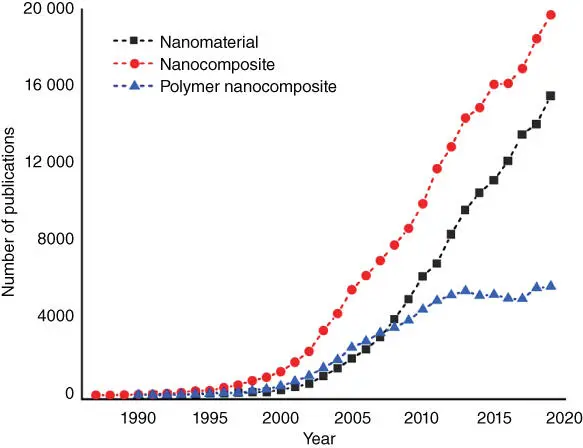
Figure 1.2 Number of publications per year on “nanomaterials,” “nanocomposites,” and “polymer nanocomposites,” according to SciFinder Scholar on 30 April 2020.
1.2 The Advantage of Nanocomposites
Since the fillers of nanocomposites are nanoscale, the performances of nanocomposites can be improved by the advantages of the reduction of filler size and the increased surface area. In terms of size, the filler is 3 orders of magnitude smaller than the traditional substitute. In addition, the quantum confinement effects caused by the nanomaterials will lead to new physical phenomena, which can be applied in electrical and optical research. Many of these properties are related to the size of the polymer chain, and the polymer chain close to the fillers is affected by the interaction between the packing surface and the polymer matrix, which is different from the polymer chain far away from the interface. The size of polymer chain can be reflected the radius of gyration R g, and the thickness of the interface regions ( t ) around the particle is independent of the particle size. Therefore, the volume of interface material ( V interface) relative to the volume of particle ( V particle) will increase with the decrease of particle size.
Читать дальше
